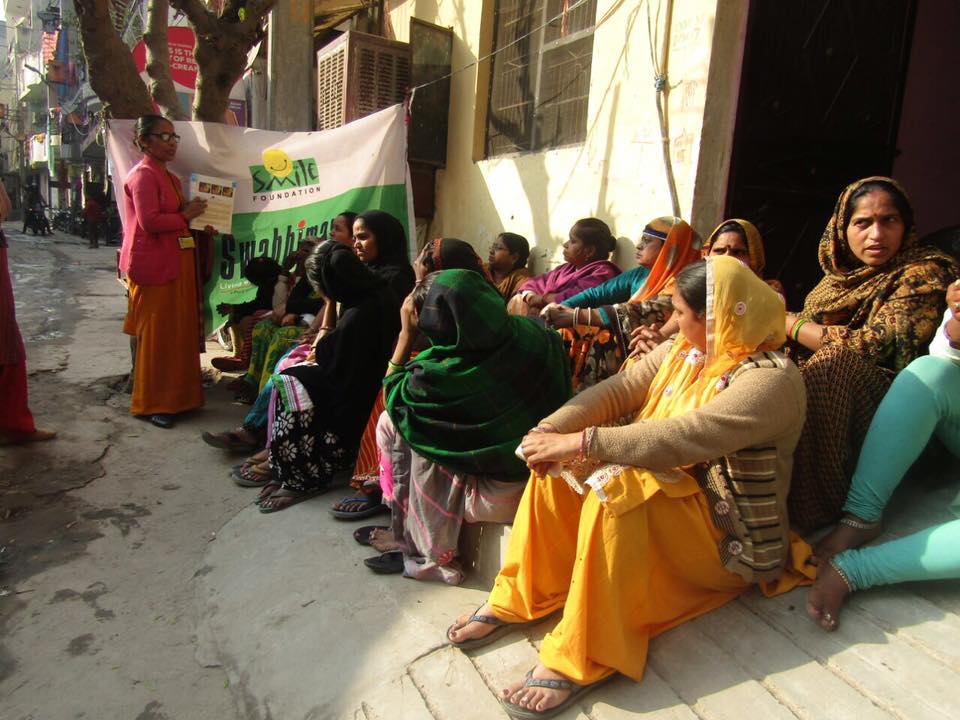From the period of pregnancy until infancy, a child’s health is mostly predetermined depending on the mother’s health and well-being. The child must get the highest level of care from the prenatal period through the fifth year of life since any issues that arise during this period or pregnancy of the mother, might have a significant impact on their health. Besides receiving clinic-based treatment, mothers should be made aware of home care and healthy practices and also recognition of early danger signs.
To attain a long-term healthy status for their bodies and their children, pregnant women worldwide should get Information, Education and Care (IEC) material as part of their prenatal care through various communication channels. Regular IEC programs, whether given in groups or one-on-one settings during prenatal care, lead to favourable changes in people’s health behaviours, which benefit both the mother and the unborn child.
Data on maternal deaths
According to certain studies, one of the most crucial factors in lowering maternal morbidity and death is the IEC material provided to expectant mothers during prenatal care. Recent data released by the World Health Organisation, which tracked maternal deaths from 2000-2020, showed that every two minutes, a woman dies during pregnancy or childbirth. It also revealed alarming setbacks for women’s health over recent years, as maternal deaths either increased or stagnated in nearly all regions of the world. It showed there were an estimated 287,000 maternal deaths worldwide in 2020. This marks only a slight decrease from 309,000 in 2016 when the UN’s Sustainable Development Goals (SDGs) came into effect.
In India, about 1.30 million maternal deaths occurred between 1997 and 2020, with about 23,800 in 2020, with most occurring in poorer states and among women aged 20-29 years.
Approximately 270 million women lack access to contemporary family planning methods, and almost a third of women do not receive necessary postnatal care or have even four of the eight recommended prenatal exams.
Commenting on the report, UNICEF Executive Director Catherine Russell, said, “No mother should have to fear for her life while bringing a baby into the world, especially when the knowledge and tools to treat common complications exist. Equity in healthcare gives every mother, no matter who they are or where they are, a fair chance at a safe delivery and a healthy future with their family.”
Hence, why is IEC material an important factor?
Pregnant women who receive IEC material as part of antenatal are better able to identify pregnancy-hazard symptoms, such as antepartum haemorrhage (vaginal bleeding), convulsions, intense headaches with blurred vision, fever, breathing difficulties, severe abdominal pains and backaches, and to report to a medical facility as soon as they suspect or experience any of the symptoms.
IEC given during ANC also improves a woman’s capacity to make several care plans to meet the demands of her pregnancy. IEC also impacts women’s decisions to seek professional delivery support by increasing their awareness of potential pregnancy complications.
One of the most crucial factors in lowering maternal morbidity and death, according to some studies, is the information and education provided to expectant mothers during prenatal care.
IEC material’s goal for children’s well-being and social initiatives
IEC’s goals go beyond simply the basic contents of materials and collateral like hoardings, banners, brochures and posters. The IEC material has a greater influence on social behavioural change through various government initiatives and programs. Raising knowledge of maternal and child health can thus result in children living better lives and greater chances for them to participate in and lead social projects.
IEC is a crucial component of Integrated Child Development Scheme (ICDS) initiatives and programs that aim to positively influence mothers, kids, families and communities via behavioural changes that raise understanding of nutrition and health.
Regular IEC training with communities can help children develop awareness and enhance their knowledge about sexually transmitted diseases, prevention, testing, treatment and care and issues concerning growing up, from a young age. This also leads to addressing risk perception and improving self-efficacy.
IEC can help in enhancing skills to cope with negative peer pressures and taboos in terms of health difficulties, it encourages safer sexual health behaviours, instilling confidence to demand and access quality youth-friendly services, including testing, counselling, treatment and care, establishing linkages with ASHA clinics and government policies and sensitising on issues surrounding gender vulnerabilities, human rights, stigma and discrimination.
Frequent IEC training in communities can assist young children in being more aware of and knowledgeable about sexually transmitted diseases, prevention, testing, care, treatment and difficulties related to growing up. Addressing risk perception and enhancing self-efficacy follow from this as well. Establishing connections with ASHA clinics and government policies, promoting safer sexual health behaviours, building confidence to demand and access high-quality, youth-friendly services like testing, counselling, treatment, and care, and raising awareness of issues about gender vulnerabilities, human rights, stigma, and discrimination — are all the ways that IEC can support the development of coping mechanisms and taboos surrounding health difficulties.
Swabhiman programme and inclusive training
Smile Foundation’s work in promoting safe health practices through programmes like Smile Foundation has been exemplary in this regard.
Under a recent training session, that was initiated under the Swabhiman programme, Smile Foundation distributed a set of IEC materials to mobilise communities effectively and communicate the right knowledge interestingly, so that their families and communities can develop a conscious awareness towards such sensitive issues.
Several essential themes on a woman’s body and life were discussed, including her reproductive system, menstruation, pregnancy, and other issues. The main objective was to inform young girls and women about recent government initiatives, as well as the wider community, which includes men and young boys who are often overlooked in this context.



